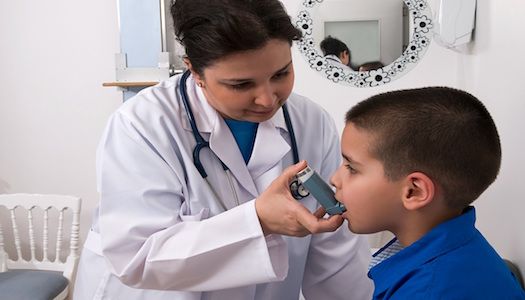Most Children Are Sensitized to Three or More Allergens
Which recommendations decrease asthma morbidity in children with asthma?

Karin Pacheco, MD, MSPH, FAAAAI, set a simple learning objective for those attending her presentation at the annual meeting of the American Academy of Allergy, Asthma, and Immunology (AAAAI 2017) in Atlanta, Georgia--to identify which recommendations do and do not work to decrease asthma morbidity in children with asthma.
Pacheco, associate professor in the Division of Environmental and Occupational Health Sciences in the Department of Medicine at National Jewish Health in Denver, explained that she would be presenting a couple of studies indicating that avoidance doesn’t prevent sensitization, however, reduced allergen exposures can reduce morbidity.
Most children are sensitized to multiple allergens, Pacheco said, and those allergens have to be thoughtfully targeted.
In a 2001 study published in The Lancet, Thomas Platt-Mills, FRCP, and colleagues looked at 226 children, 47 of whom had asthma symptoms and bronchial hyperresponsiveness (BHR). Pacheco explained that there was an unclear sensitization relationship. A higher exposure to dust mites led to higher IgE and IgG response to dust mites, as well as more asthma. However, higher exposure to cats led to higher IgE and IgG4 response to cats, but less asthma.
A study published in the same journal in 2002 found that outcomes depend on the mother. In 448 children with an average age of 5, having mothers without asthma and cat exposure gave children a lower risk of wheeze. But mothers with asthma and cat exposure resulted in a higher risk of wheeze.
“I think probably in terms of sensitization, the answer is going to be like peanuts” Pacheco said. Exposure matters, but you also have to identify people with the genetic predisposition.
Published in the Annals of the American Thoracic Society in 2015, researchers examined 478 children hospitalized for asthma. Self-reported home descriptions were collected for the kids, ages 4 to 16. The findings indicated that more than 50% of the children were sensitized to dust mite, cat, and dog, as well as two types of fungus, Alternaria and Aspergillus. In addition, 28% of the cohort was sensitized to cockroach and 18% to mouse. Of the participants, 68% were sensitized to three or more allergens, Pacheco said that this becomes important.
A 2010 study in Allergy included 546 inner city kids with an average age around 14. In this case, more IgE was associated with higher risk of asthma, as well as lower lung function, higher risk of eosinophils, and higher risk of exacerbations or hospitalizations. For sensitized participants, there was an “enormous” correlation with allergen specific IgE and settled dust allergen levels, except for cat (p=0.71):
- Cockroach (p<0.0001)
- Dust mite (p<0.0001)
- Mouse (p<0.003)
Some interventions have less impact, and for asthma, Pacheco pointed to smoking cessations and pet avoidance. Quitting smoking can be just plain difficult and pet owners would know it can be a nearly impossible task to say goodbye to a furry friend.
Using asthma education on its own also tends to be ineffective. A 2003 study gave the take home message that “doctors usually gave inadequate advice,” as described by Pacheco. An additional counselor significantly helped improve asthma symptoms.
Explaining how to counsel patients with asthma in a 15-minute presentation isn’t ideal, Pacheco joked, but there are takeaway points to keep in mind:
- Reducing allergen exposures decreases asthma morbidity in sensitized children
- Recommend multiple interventions, as most children are multiply sensitized
- Major allergens include those that come from cockroach, dust mites, cat, and dog